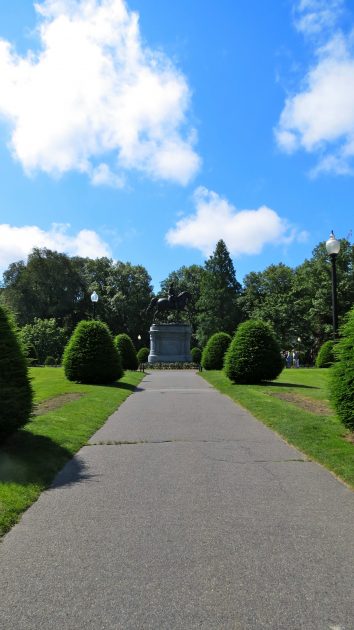Home | Washington, George
- CountryUS
- Town:MA Boston
-
Year of creation:1864
- Rider(s):Washington, George
(1732–1799) was born into a prosperous family in Virginia. He was privately educated and gained experience as a land surveyor before joining the militia. From 1755 to 1758 he served as an officer in the French and Indian War. After rising to the rank of colonel, he resigned his post and married Martha Dandridge, returning as a gentleman farmer to the family plantation at Mount Vernon, Virginia. He soon re-entered public life and served as a member of the First and Second Continental Congress (1774–1775). On the outbreak of the American Revolutionary War in 1775, Washington was made Commander-in-Chief of the Continental Army. His military prowess and inspirational leadership held the colonial armies together against overwhelming odds, and secured the evacuation and defeat of the British in 1783. Washington again retired to Mount Vernon, but his dissatisfaction with the new provisional government caused him to resume an active role, and in 1787, he presided over the second federal constitutional convention in Philadelphia. He was unanimously chosen as the first President of the United States, and was inaugurated in New York City in 1789. Washington was re-elected to a second term in 1793, declined a third term, and retired from political life in 1797. As US President, he oversaw the creation of a strong, well-financed national government that maintained neutrality in the wars raging in Europe, suppressed rebellion and won acceptance among Americans of all types. His leadership style established many forms and rituals of government that have been in place since, such as using a cabinet system and delivering an inaugural address. Washington is universally regarded as the ‘father of his country’. As the leader of the first successful revolution against a colonial empire in world history, Washington became an international icon for liberation and nationalism, especially in France and Latin America.
- Sculptor(s):Ball, Thomas
(1819 –1911) was an American artist and musician. His work has had a marked influence on monumental art in the United States, especially in New England.
-
The location of this statue, in a public garden, is most attractive. Thomas Ball completed the statue in four years, but due to the Civil War and the resulting shortage of bronze, the casting was deferred for a considerable time. It was finally unveiled in 1869. The statue represents Washington in middle age, and the countenance and attitude are full of force and vigour.
The noted sculptor T.H. Bartlett of that time pronounced the work to be ‘the most important and best specimen of monumental decoration in New England’ “The horse,” he said, “has a personality; its ears being thrown forward, the eyes and action of the head indicating that he is attracted by some object. Such a personality is an essential quality in a composition like this…It is said that the rider does not sit well; that though the horse is intended to move, he has no motion; that the action of the hand holding the bridle is not worthy of its occupation, and that the action of the right hand is too frivolous. Whatever may be said against this statue from the standpoint of the great equestrian statues of the world, it is certain, that as time goes on, and the circumstances surrounding its production are fully understood, it will lose neither interest or admiration.” Derived from Bacon’s Dictionary of Boston (1886).




























